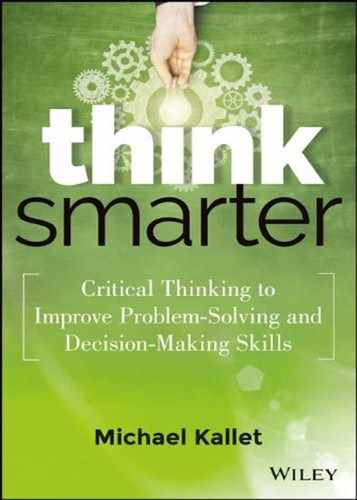30 Summary of Conclusions
Creating Solutions
We started this section by discussing inductive reasoning, critical thinking that leverages what we do thousands of times a day. We learned that it's all about the premise—the facts, observations, experiences, beliefs, and assumptions that we combine to come up with conclusions. We looked at ways to ensure a strong premise through credibility, consistency, and triangular thinking. We learned influencing and persuading is about having a strong premise and weakening others' premises, why change is hard, and how to address that difficulty. We moved on to innovative solutions with outside-the-box, abductive, and impossible thinking. These latter techniques produce solutions the ordinary premise-to-conclusion critical thinking process won't.
Getting Started
Problem solving and accomplishing things is the purpose of finding conclusions. Ask these questions when you're looking for a solution:
- What assumptions can I make? (Or, what assumptions am I making?)
- Why am I making those assumptions?
- Can I validate those assumptions?
- What conclusions can I reach based on those assumptions derived from facts, observations, and experiences?
- Are my premise components credible?
- Are my premise components consistent with each other and other things I know?
- Can I indirectly triangulate on a solution? (Or, do I get conflicting answers if I look at this situation from multiple perspectives?)
- Given my conclusion, how can I persuade others to endorse this solution?
- How can I defend my conclusion?
- How can I influence others with my premise components?
- If we move forward with this solution, how are we going to help people through the change?
- What if my assumptions are incorrect? What if I didn't have that experience? What outside-the-box ideas do these questions generate?
- How is my thinking an old dog risk? What actions can I take to combat being an old dog?
- What if we set a goal so high for my headscratcher that it becomes impossible? What new ideas are generated to help achieve the possible?
Sorry, You're Not Quite Done!
Creating solutions is the main goal in problem solving, but you're not finished. Just because you figured out what to do doesn't mean you'll do it. You have to decide to take action and do it. It may not be your decision, so before you can take action, someone else may need to decide. Therefore, we are now ready for decisions, the last—and easiest—step in critical thinking.
